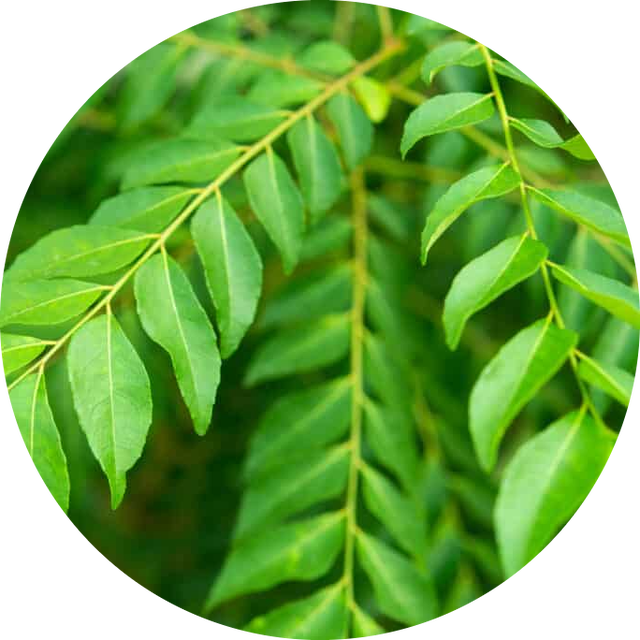- PLANT MEDICINE
- >
- Tinctures
- >
- CURRY LEAF TINCTURE
CURRY LEAF TINCTURE
Family: Rutaceae
Genus: Murraya
Species: koenigii
Synonyms: Bergera koenigii, Chalcas koenigii
Common Names: Curry Leaf, Curry Tree, Karuveppilai (Tamil), Kari Patta (Hindi)
Parts Used: Leaves, occasionally fruits and seeds
Main Actions: Antioxidant, antimicrobial, anti-inflammatory
Other Actions: Antidiabetic, hepatoprotective, neuroprotective
Description: Curry leaf is a tropical to subtropical plant characterized by aromatic leaves with a distinct curry aroma. It is a small tree or shrub that typically grows up to 6 meters in height.
Tribal and Herbal Medicine Uses: Traditional medicine employs curry leaf for treating various ailments including indigestion, diabetes, skin disorders, and as a general tonic. Curry Leaf is thought to be a powerhouse in fortifying the immune system and offering potential protection against cancer. Additional benefits include improved metabolic function, stress and anxiety reduction, as well as the promotion of healthy hair and skin.
Plant Chemicals: Alkaloids, flavonoids, phenols, glycosides, essential oils
Biological Activities and Clinical Research: Studies suggest curry leaf exhibits antioxidant, antimicrobial, and anti-inflammatory properties. Some research indicates its potential in managing diabetes and protecting liver and neurological health.
Current Practical Uses: Culinary seasoning, traditional medicine, herbal supplements
Main Preparation Method: Leaves are commonly used fresh or dried in cooking or herbal preparations.
Main Actions (in order): Antioxidant, antimicrobial, anti-inflammatory
Main Uses: Culinary seasoning, digestive aid, diabetes management, skincare
Properties/Actions Documented by Research: Antioxidant, antimicrobial, anti-inflammatory, antidiabetic, hepatoprotective, neuroprotective
Other Properties/Actions Documented by Traditional Use: Digestive aid, skin tonic
Cautions: There are no significant adverse effects reported for curry leaf consumption in culinary amounts. However, excessive use may cause gastrointestinal upset in sensitive individuals.
Traditional Preparation: Leaves are often used in cooking various dishes, added during the tempering process or as a garnish. In traditional medicine, they are brewed into teas or incorporated into herbal formulations.
Contraindications: No specific contraindications reported, but individuals with known allergies to Rutaceae family plants should use with caution.
Drug Interactions: Limited information available, but potential interactions with medications for diabetes or liver conditions are theoretically possible; consult a healthcare professional if using curry leaf therapeutically alongside medications.
Recommended dosage: 1 - 2ml taken 2x daily in a small glass of water or juice on an empty stomach for better absorption.

